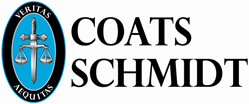By JACKIE CALMES |
WASHINGTON — “Despite signs of revival in housing, the Obama administration announced on Thursday an extension of its principal program for helping distressed homeowners to get mortgage modifications and avoid foreclosure.
Jacob J. Lew, the Treasury secretary, and Shaun Donovan, secretary of the Department of Housing and Urban Development, said the Making Home Affordable program, which includes the Home Affordable Modification Program, known as HAMP, and related consumer protections, would remain in effect through 2015. They were due to lapse at the end of this year.
Under HAMP, the federal government gives financial incentives to mortgage providers to modify the loans of eligible borrowers so the homeowners’ monthly payments do not exceed 31 percent of their monthly income. Beneficiaries have included homeowners with negative equity where property values plummeted and those who lost jobs.
“The housing market is gaining steam, but many homeowners are still struggling,” Mr. Lew said in a joint statement with Mr. Donovan. “Extending the program for two years,” he added, “will benefit many additional families while maintaining clear standards and accountability for an important part of the mortgage industry.”
Mr. Donovan said of the program: “Families across the country have used its tools to reduce their principal, modify their mortgages, fight foreclosure and stay in their homes — helping further stimulate our housing market recovery. And with this extension, we ensure that the program keeps supporting communities for years to come.”
President Obama introduced the mortgage-modification program and related initiatives in early 2009 at the peak of the recession and credit crisis. But, especially at the outset, the initiatives collectively called the Making Home Affordable program did not come near to fulfilling the administration’s promise of relief for several million homeowners.
Banks and other financial institutions were slow to participate, while many homeowners were either dissuaded or disqualified by paperwork requirements and restrictions intended to prevent waste and fraud in the $30 billion program. Over time, administration officials refined the initiative and pressured lenders to help borrowers. Participation increased, if not to the anticipated levels of three million to four million homeowners.”
